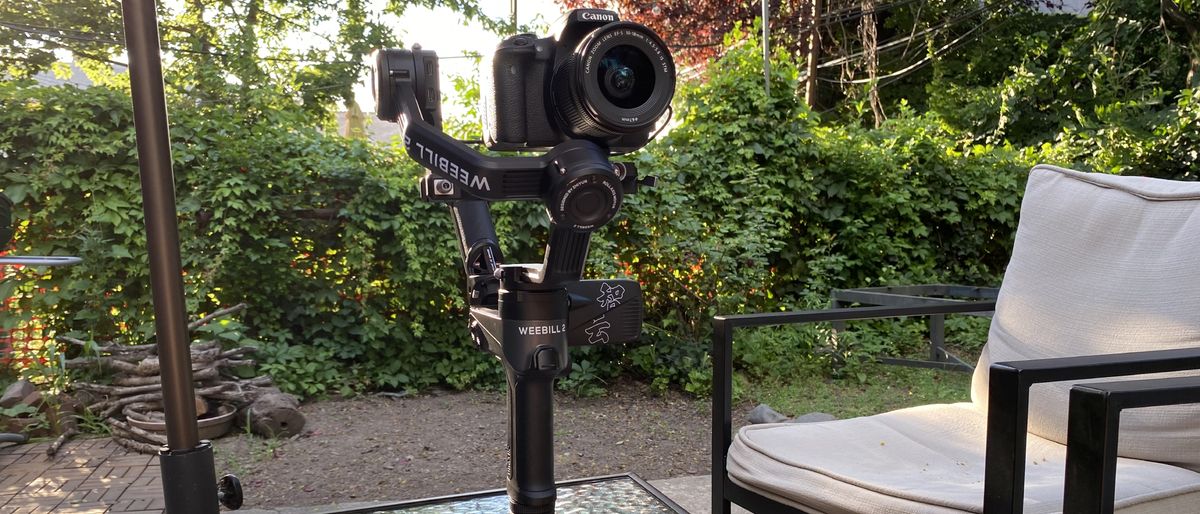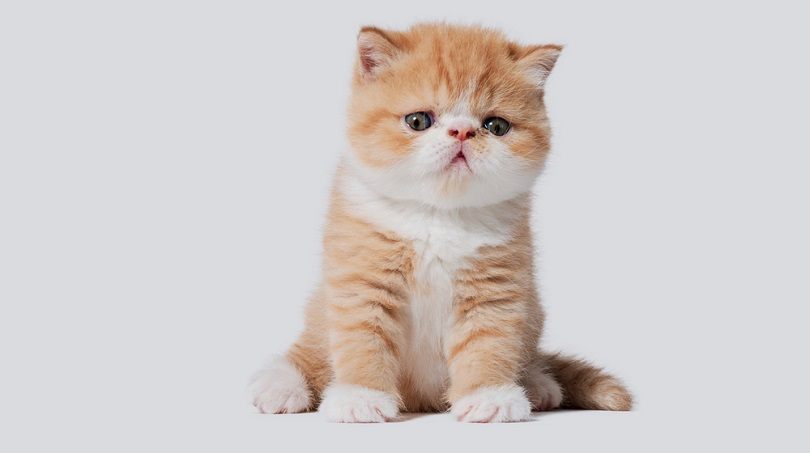

Compared to most dog breeds, cats live a pretty long time. However, some breeds live even longer than the average cat. Usually, these breeds either came about naturally or weren’t selectively bred for any trait that may lead to health problems.
To live a long time, cats have to avoid the decline of ageing and remain healthy for years after becoming seniors. To achieve this, they must have healthy genetics and be prone to little or no disorders.
We’ll discuss some of the most long-lived breeds in this article. If you’re looking for a cat that will stick around for decades to come, you’ve landed in the right article.
Top 14 Longest Living Cat Breeds:
1. American Shorthair
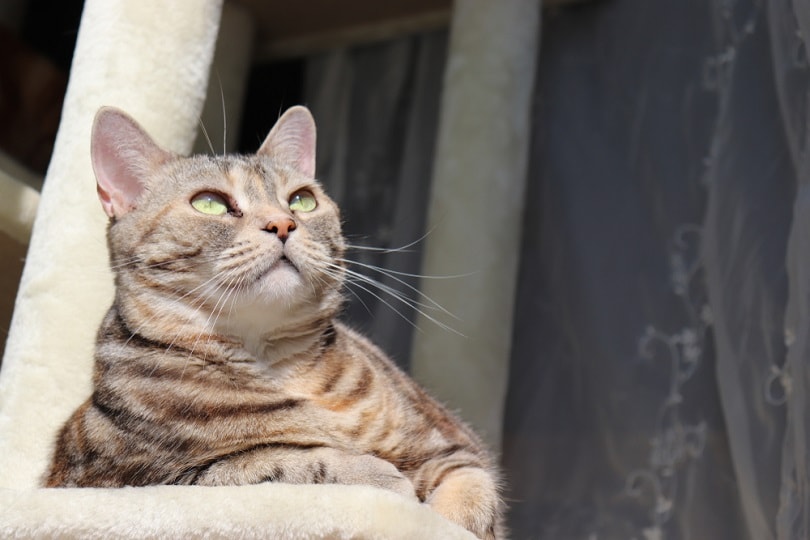
| Lifespan: | Up to 20 years |
| Size: | 11-15 pounds |
| Temperament: | Adaptable, “moderate,” affectionate |
The American Shorthair is probably what you think of as the “average” cat in America. These felines are actual working cats. They likely developed from the cats first brought over by the European settlers of North America. The most robust and most adaptable cats survived and bred, leading to the breed we have today. These felines are built sturdily and are incredibly agile. They are made for survival, and therefore prone to very few health problems.
These cats are affectionate, but they aren’t dependent on people. They enjoy playtime, though they aren’t nearly as active as many other breeds. In general, these cats are very average. They call into the middle of nearly every trait.
They’re moderately sized and have average intelligence. They are usually pretty easy to train and are social as long as they are appropriately socialized. They adapt well to homes that contain other animals and people.
The only problems that commonly affect this breed is hip dysplasia and hypertrophic cardiomyopathy, though these problems are somewhat common in most cat breeds.
2. Bombay
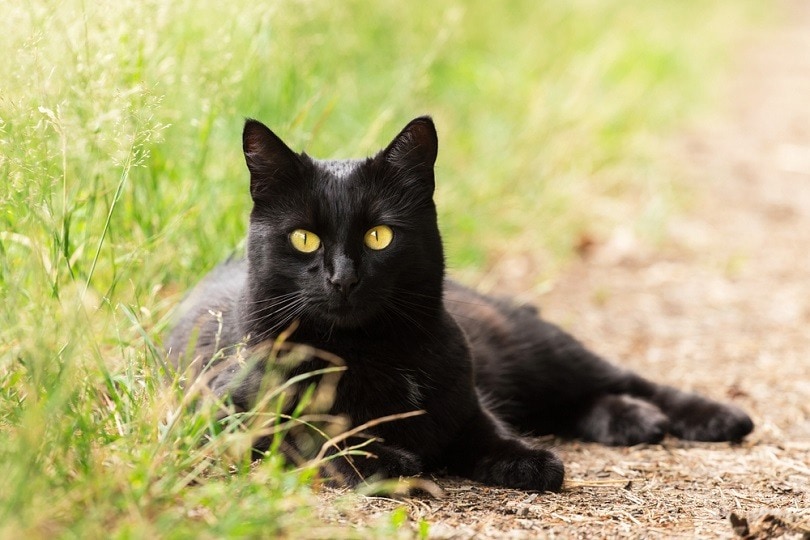
| Lifespan: | 12-18 years |
| Size: | 8-15 pounds |
| Temperament: | Playful, people-oriented, clever |
This medium-sized cat breed is muscular and surprisingly heavy for their stoat size. They are well-balanced and agile, like most other functional breeds. This breed is often described as “dog-like,” as they attach themselves to their people and don’t let go. They are playful and will follow you around the house, meowing for attention. They are very people-dependent and do best if their people are home most of the day.
They are clever and can be taught many tricks. Many even enjoy being walked around on a leash outdoors, where they can run off some of their energy. They aren’t as vocal as some breeds, but they will meow regularly – you can count on that. They enjoy crawling up in laps whenever they are available, though they enjoy playtime as well.
This breed was created to resemble the black leopards of India, so they exclusively come in black.
3. Balinese
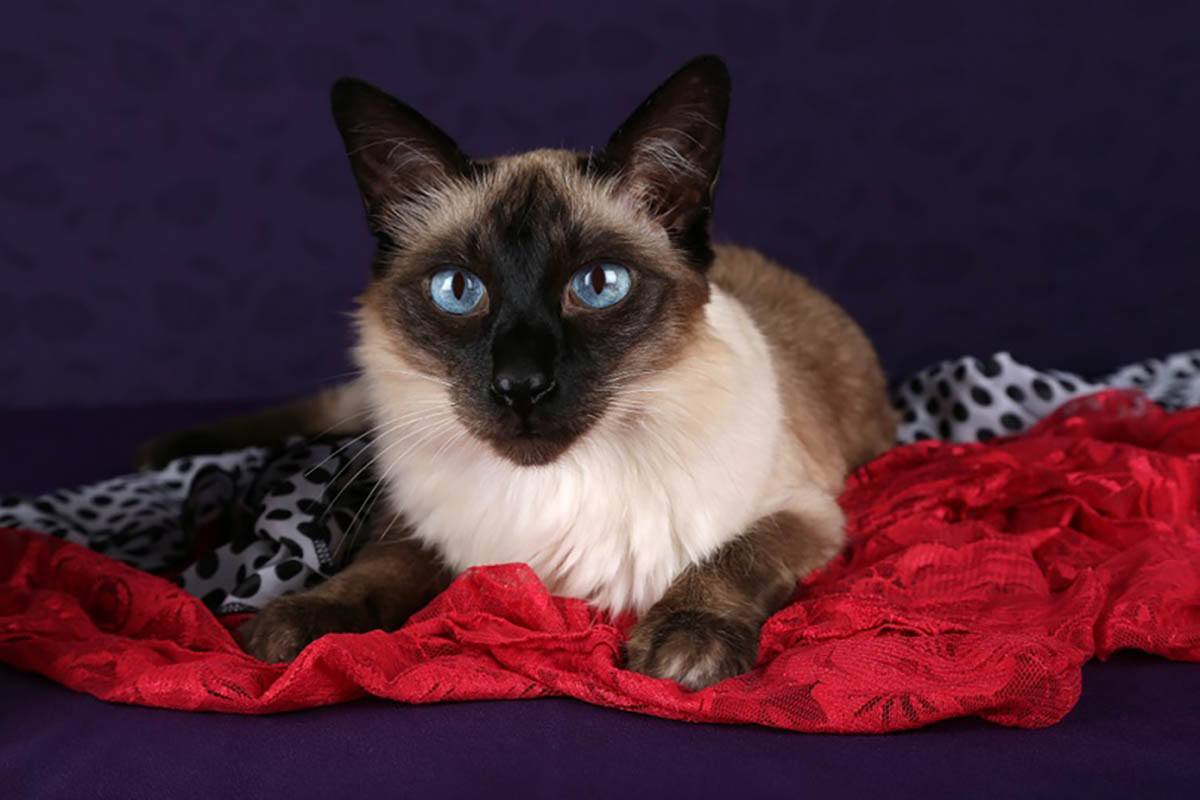
| Lifespan: | 12-20 years |
| Size: | 6-11 pounds |
| Temperament: | Vocal and playful |
Though they are often mistaken for the Siamese, the Balinese is a separate breed. However, they likely do have some Siamese in their ancestry. They are intelligent and enjoy interacting with people. They will often insert themselves into wherever the activity is. They get along well with people and other animals, including those that they don’t know. Their intelligence allows them to learn tricks, though they can also teach themselves tricks that you’d rather they didn’t know – like using doorknobs.
They can be a bit more reserved than some other social cats, but they will seek out attention regularly. They are often described as content cats that seem to enjoy whatever is going on. They love to climb and will happily scale curtains and reach high shelves. Climbing structures are a must.
These cats have silky fur that makes them very cuddly, so it’s a good thing they enjoy being held. They come in pointed colors, for the most part, similar to the Siamese.
They aren’t known for any particular genetic issues, which is likely one reason they can live for up to two decades.
4. Egyptian Mau
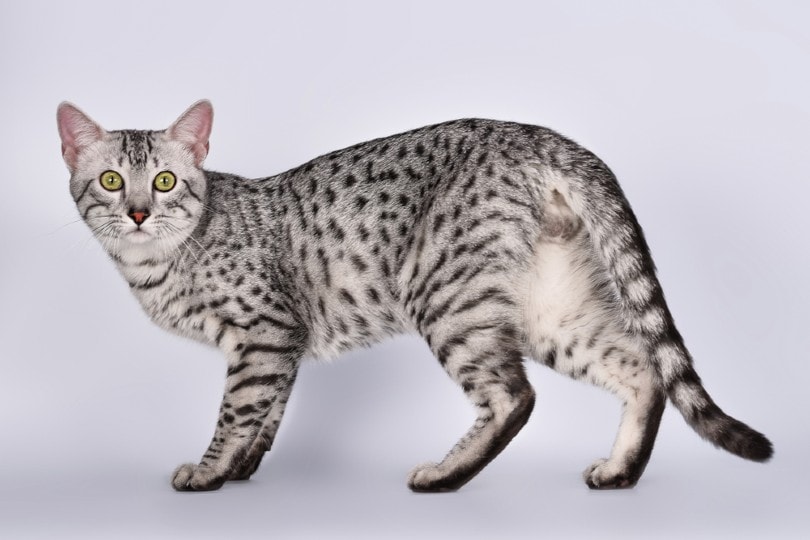
| Lifespan: | 12-18 years |
| Size: | 8-10 pounds |
| Temperament: | Active, friendly, brave |
The Egyptian Mau is a medium to short-haired breed. They are one of the few domesticated breeds that are naturally spotted without being crossed by some wild cat. This breed is ancient and likely one of the breeds that started the modern domesticated cat. They look similar to a Siamese, but their coat patterns and other characteristics are quite different.
This breed is also one of the fastest domestic cats. They have longer hind legs than most breeds, which allows them to run by stretching the leg back further. They can run up to 30 mph.
This feline is known for their playful and active personality. They were built to run, so they need to get their energy out daily. They are pretty friendly and outgoing. They typically aren’t scared of strangers or loud noises, which makes them suitable for families and those that like to have friends over. They are more temperature-sensitive than other breeds. They may be unsuitable for colder climates, but they thrive in colder temperatures. They are also more sensitive to medicines and anesthesia.
These cats have distinctive vocalizations. They can meow. However, they can also chirp and make other noises.
5. Burmese

| Lifespan: | 18-20 years |
| Size: | 6-14 pounds |
| Temperament: | People-oriented, active, smart |
The Burmese is a people-oriented cat. They keep many of their kitten-like characteristics into adulthood. They are a bit more active and playful than other cats. They form strong bonds with people and have a tendency to follow them around the house. They like to be directly involved in whatever their owners are doing. They can be taught to play games like fetch, which wears them out and mentally stimulates them.
These medium-sized cats are more muscular than they look. They are stocky cats that are heavier than they first appear. These cats come in a variety of different colors, and the number continues to grow over the years. More colors are being bred into the breed all the time, though whether they are accepted officially is a different story.
6. Maine Coon
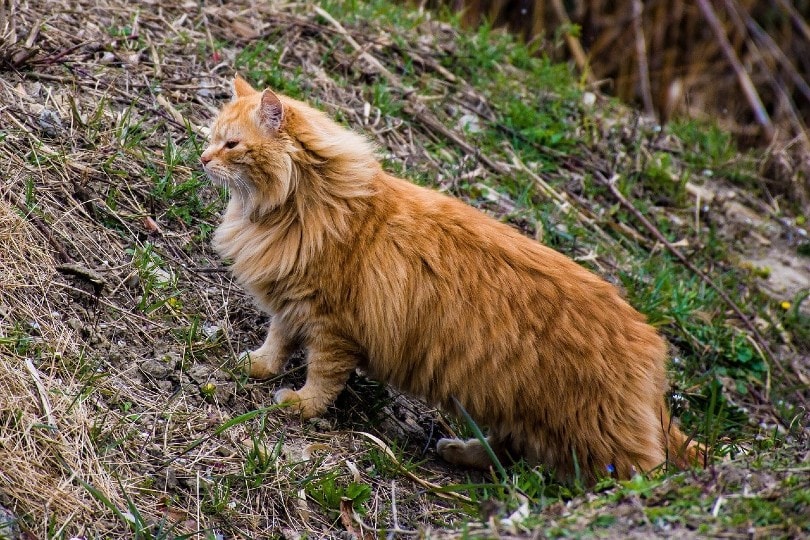
| Lifespan: | 13-14 years |
| Size: | 8-18 pounds |
| Temperament: | Independent, friendly, active |
The Maine Coon is a well-known cat, if only for their large size. They are friendly and affectionate, though they aren’t dependent on other people. They can be left alone for an extended period without a problem and don’t mind entertaining themselves when they need to. They are social and get along with just anyone, including other animals. They aren’t precisely “lap cats,” but they will enjoy cuddling from time to time.
As smart cats, they need to be kept mentally stimulated. An easy way to do this is with puzzle toys. These cats often like water, so a bowl they can splash around in can keep them entertained for hours. They can be taught to play fetch, which provides some much-needed bonding and activity.
These cats can be vocal, but they aren’t nearly as noisy as a Siamese. They can make a variety of noises, including chirps and trills.
7. Oriental Shorthair
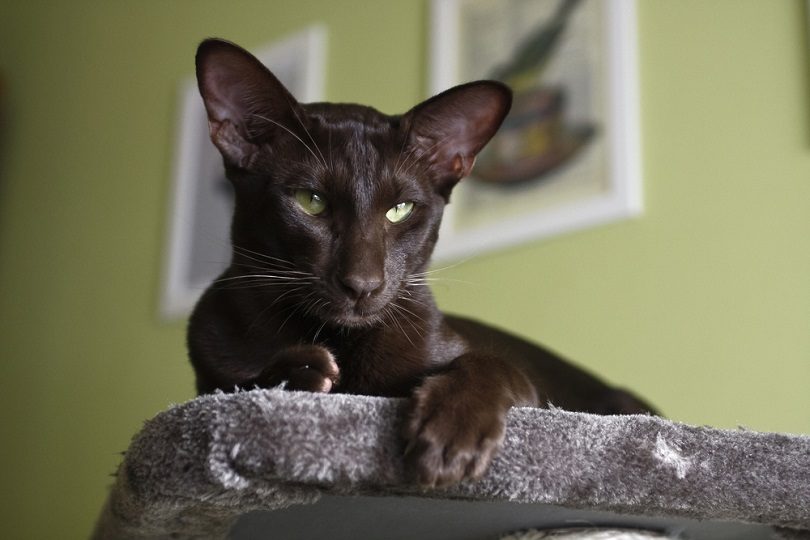
| Lifespan: | 15+ years |
| Size: | 8-12 pounds |
| Temperament: | Active, intelligent, social |
This unique cat is closely related to the Siamese and looks like them too. They come in many different colors, including white, tabby, and brown. They have similar personalities to a Siamese, but with a slightly different appearance. They are known for being intelligent and playful. They like playing games like fetch and tag. Many can be taught to walk on a leash and love going on walks to explore and run off some energy.
They are incredibly athletic and can jump extremely high. They are social animals and don’t like living alone. They do well with other cats, which may be necessary if you are away from home often. They aren’t suitable cats for owners who work many houses that tend to be empty most of the day.
There is also a longhair version of this breed, though it is grouped as a separate breed altogether.
8. Manx

| Lifespan: | 15+ years |
| Size: | 8-12 years |
| Temperament: | Active, people-oriented, intelligent |
The Manx is an unusual cat. This breed developed exclusively on the Isle of Man. They developed a rare genetic condition that causes their tail to become nothing but a stub. It just doesn’t develop in the womb. Because the Isle of Man is so tiny, the genetics were able to spread through most of the population, which created this breed that we know today.
While these cats are known as being completely tailless, they can have a tail. It depends on the genes they develop from their parents. Tailed Manx are sought after by breeders, as you can’t breed two tailless Manx together without many of the kittens passing away before birth. If the cats inherit two of the tailless genes, they do not develop and are often absorbed by the mother.
These cats are known for their hunting abilities. They have been used by farmers and sailors to control the mouse population. They can even take down larger prey when young.
This feline is often exceptionally social and outgoing. They are attached to their owners, though they can be shy around strangers. They are intelligent and playful, which makes it easy to teach them games like fetch. They are often described as “dog-like” for this reason.
9. Sphynx
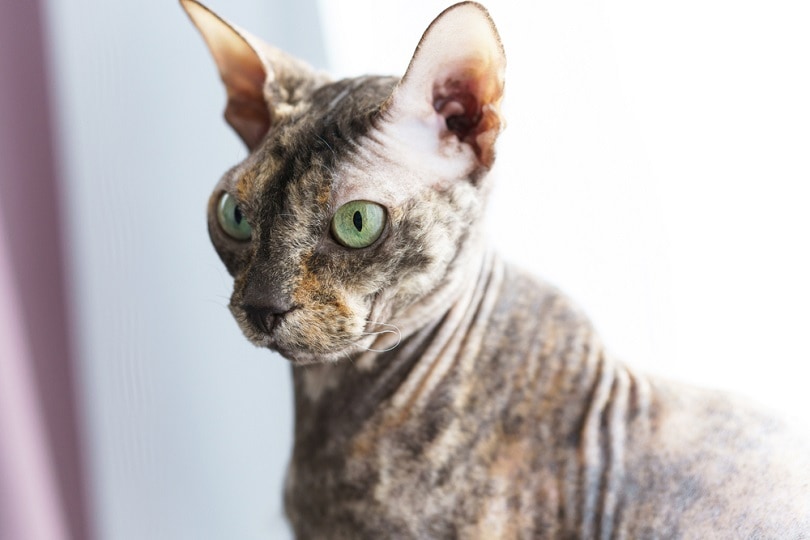
| Lifespan: | 8-20 years (extremely dependent on care) |
| Size: | 6-12 pounds |
| Temperament: | Outgoing, affectionate, brilliant |
The Sphynx cat is well-known due to their hairlessness. They certainly stand out amount other cat breeds out there. This hairlessness is the result of a genetic mutation, which occurred naturally and was then selectively bred for. Not all of them are entirely hairless. Some of them have very thin fur that is often described as “peach fuzz.”
Because the cats have no fur, they lose heat at a faster rate than other cats. They are warm to the touch and will not withstand colder temperatures quite as well. Their whiskers may be expected, completely gone, or “broken.”
These cats are known for their extroverted, friendly nature. They are brilliant and can be taught a variety of tricks. They will also figure out things around the house, such as how to turn the light off and on. They are affectionate with their owners, though they may not be quite as friendly with strangers. They are incredibly active and need quite a bit of exercise. Toys and climbing structures are highly recommended.
10. Siamese

| Lifespan: | 12-30 years |
| Size: | 8-10 pounds |
| Temperament: | Affectionate, smart, talkative |
The Siamese is the stereotypical vocal cat. They talk all the time and are pretty loud about it. Unlike other breeds, they will often talk even when they don’t need anything. They just like to talk!
They were one of the first Asian and become popular in the 19th century throughout Northern America and Europe. They are often considered an exotic breed, though they are pretty common throughout the US.
The Siamese is one of the most affectionate cats out there. They are very social and love just about everyone. They are intelligent and can learn a variety of tricks and commands. Most enjoy being around people and will want to be at the center of the action. They are not a cat that you can leave to their own devices all day. They need companionship.
These cats are playful and active well into adulthood and exhibit many dog-like behaviors. They will follow their owners around the house and love to play games like fetch.
11. Russian Blue

| Lifespan: | 18-25 years |
| Size: | 7-15 pounds |
| Temperament: | Calm, active, independent |
The Russian Blue is known for their fluffy, grey-ish coat. They have short hair, but their two-layered coat sticks out a bit, giving them their fluffy appearance. While these cats mostly come in their normal blue coloration, they can come in points if particular cats are bred together. This is due to their Siamese ancestry, though the color point gene is recessive, making it quite rare.
This breed is known for being relatively calm. They can be friendly with people they know, but they are also a bit reserved and independent. They love to cuddle occasionally, though usually only with people that they know well. They will spend most of their time by themselves. They can be pretty active even as they get older. Many cats enjoy playing fetch and similar games.
These cats are fierce hunters and can take down all sorts of prey animals. They are energetic and will kill quite a bit of wildlife if left to roam outside. They are pretty athletic, even when compared to other cats.
Unusually, these felines don’t reach sexual maturity until they are 3-4 years old. They age much slower than other cats.
12. Savannah Cat
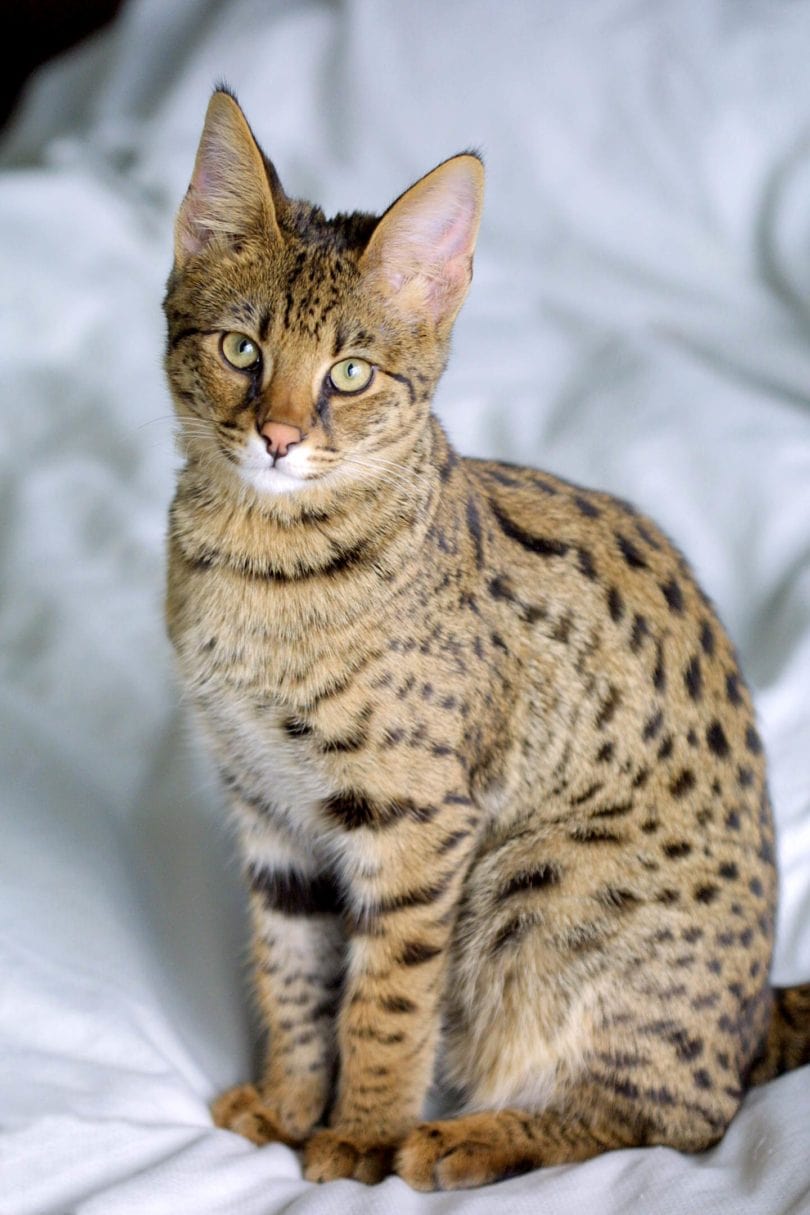
| Lifespan: | 20 years |
| Size: | Varies depending on the generation |
| Temperament: | Active, dog-like, clever |
The Savannah cat isn’t only a domestic cat. Instead, they were bred from African Servals and domestic cats. For this reason, they are pretty unique when compared to other domesticated felines. They look very wild and are often much more significant than other domesticated felines. They are also more dog-like when it comes to their behavior.
Most Savannahs are highly social and enjoy being around people. However, socialization seems to play a significant role in this. If not introduced to people and other animals at a young age, these cats can revert to hiding and hissing when strangers come into the home. About 50% of first-generation Savannah cats report this sort of hiding behavior.
These cats can jump incredibly high. Many can leap up to 8 feet standing still – even more if they’re moving. This makes nearly everything reachable by a Savannah cat. You will need to invest in quite a bit of time cat-proofing your house with these felines. They can often learn how to open cabinets and even use doorknobs. Many will figure out how light switches work.
Most Savannahs like to play in water. Some are even reported as taking showers with their owners and swimming in pools. They may enjoy a small pool to play in. They may try to play in their water bowl, so it isn’t unusual for them to make a substantial mess with the water.
13. Ragdoll
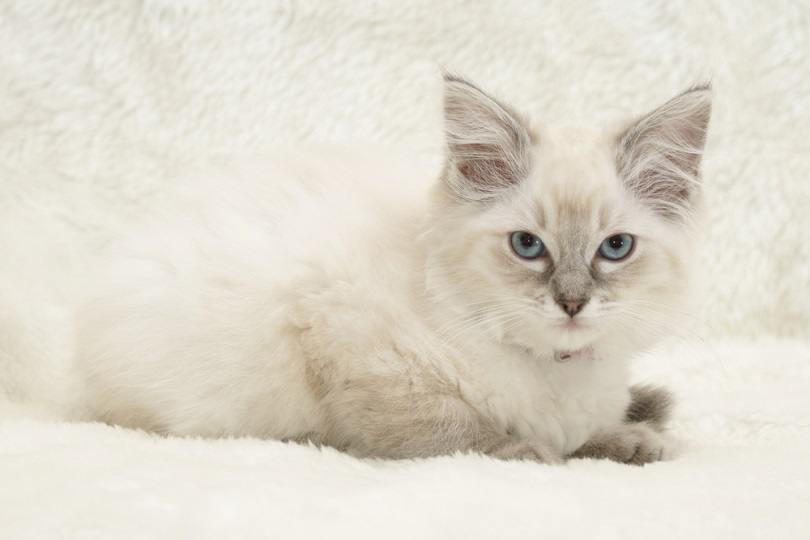
| Lifespan: | 15+ years |
| Size: | 8-20 pounds |
| Temperament: | Docile, cuddly, friendly |
Ragdolls are pretty popular due to their amiable and cuddly nature. These muscular cats have medium-length hair that is very fluffy. They are well-known for being docile and peaceful, so much so that some breeders are worried that cats may be a little too docile. When picked up, these felines often go limp, which is often referred to as “ragdolling.”
This breed is getting increasingly popular in American and parts of Europe. They are known as great family cats. However, because they are so docile, they will often not defend themselves against the rough handling of children. They can be suitable for families with children as long as they are carefully supervised.
Usually, these cats will follow their chosen people around the house. They are relatively unaggressive towards other pets, including cats and dogs. They’re easy to handle and are often described as having dog-like traits.
14. Persian

| Lifespan: | 10-17 years |
| Size: | 7-12 pounds |
| Temperament: | Quiet, easygoing, relaxed |
The Persian is a long-haired cat breed that has a very short muzzle. They are sometimes described as the pugs of the cat world thanks to their shortened face. This cat breed is likely quite old. The first Persians were documented in the 1620s, though those first cats probably differed somehow from the feline we have today. Anyone official didn’t recognize them until the 19th century.
Selective breeding has caused this breed to develop a large variety of attractive coat colors. Their faces have become shorter, which has caused the rise of many different health problems over the years. Without a properly formed muzzle, some of these cats have difficulty breathing properly. As you might imagine, this has caused all sorts of health issues.
The traditional breed Persians are starting to make a comeback. Though technically of the same breed, these cats resemble the older Persians, not necessarily the ones we have today. They are often healthier and have a more prominent muzzle. Usually, this type of Persian lives pretty long.
Featured image credit: alvarog1970, Shutterstock
Kristin is passionate about helping pet parents create a fulfilling life with their pets by informing them on the latest scientific research and helping them choose the best products for their pets. She currently resides in Tennessee with four dogs, three cats, two fish, and a lizard, though she has dreams of owning chickens one-day!


